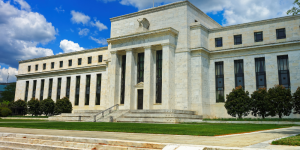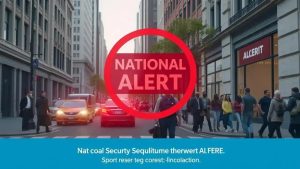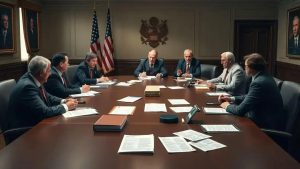Public Broadcasting Under Fire: Trump Orders Halt to Federal Support for NPR and PBS

Anúncios
📜 The Executive Order at a Glance
President Donald Trump issued an executive order aimed at the Corporation for Public Broadcasting (CPB), demanding the immediate halt of federal funding to the Public Broadcasting Service (PBS) and National Public Radio (NPR) ❌💵.
The order is clear: CPB must “cease direct funding” and avoid any future allocations “to the maximum extent allowed by law.”
This new directive comes with a sharp critique—Trump accused both PBS and NPR of delivering what he describes as “biased and partisan news coverage” 📢 rather than presenting a fair or balanced portrayal of current events.
According to the executive order, the type of viewpoints these organizations promote is less important than the claim that neither provides taxpayers with accurate or unbiased information.
Anúncios

🏛️ Motivations Behind the Move
The White House offered a straightforward justification. According to their statement, federal support for news media like PBS and NPR is now “outdated, unnecessary, and corrosive to the appearance of journalistic independence.” 🗞️
They argue that the current media landscape is more “diverse” than ever, making government-backed news outlets less essential.
Anúncios
However, it’s notable that this move comes despite Congress having already approved the CPB budget through 2027 📆, creating a standoff between the executive branch and legislative planning.
📡 Immediate and Broader Reactions
This order targets organizations that collectively reach tens of millions every week—NPR serves over 40 million listeners, and PBS network stations reach 36 million viewers monthly 👥.
Both NPR and PBS have warned that even though federal funding makes up a relatively small percentage of their budgets, losing this funding could have severe effects, especially on local stations and in crisis situations ⚠️.
As the dust settles from the executive order, questions about the future of public broadcasting and government involvement are quickly rising. Issues around news access, independence, and public reliance on these media sources are at the forefront of public discussion 💬.
🕰️ White House Justification and Timing
Rationale Behind Cutting Federal Funding
The Trump administration has framed its decision to halt funding for PBS and NPR as a matter of both principle and practicality.
Officials described public funding for news outlets as “outdated, unnecessary, and corrosive to journalistic independence.” According to the White House, federal support for news organizations is no longer justified, given how the modern media landscape looks today 🌐.
They argue that Americans now have access to a larger range of news sources than ever before, which makes the original purpose of government-backed media less relevant.
The order also claimed that continued public funding casts doubt on the neutrality of news outlets that receive it.
The White House expressed concerns that such support could erode the appearance of journalistic independence, sparking debates about whether federal involvement can ever be completely separated from content influence 🧠.
⏳ Timing and Legislative Realities
The timing of the executive order raised eyebrows. Although the order instructs the Corporation for Public Broadcasting (CPB) to “cease direct funding” and avoid future allocations, Congress has already approved CPB’s budget until 2027 🧾.
This means federal dollars are technically locked in place for the next several years, making the order’s immediate legal impact uncertain. However, the symbolic value of the announcement is significant.
It signals a strong shift in the administration’s stance toward public broadcasting—even if the funding pipeline cannot be instantly closed.
Trump’s criticisms of “biased and partisan news coverage” add another layer to the debate about the role of public broadcasters in a changing media landscape.
The implications of this order extend far beyond finances, prompting discussions on what independence and diversity truly mean for American journalism 🗽.
As these changes unfold, the impact on millions of listeners and viewers—and the networks they depend on—remains a pressing concern.
📺 Potential Impact on Public Broadcasting Networks
Tens of Millions Reach for Public Media
Every week, over 40 million Americans tune in to National Public Radio (NPR), while the Public Broadcasting Service (PBS) connects with 36 million viewers each month.
These aren’t just numbers—they represent families, students, and communities who turn to these networks for news, education, and cultural programming 🎓.
When major emergencies strike, these public broadcasters often step in as lifelines, providing timely and accessible information for people across the country 🚨.
What’s at Stake with Funding Cuts
The executive order from President Trump aims to pull federal support for NPR and PBS.
NPR’s director, Katherine Maher, shared that federal funding alone was expected to contribute around $120 million to the network in 2025 💵.
Interestingly, this makes up less than 5% of NPR’s overall budget.
While these figures might sound small in the context of national media, every dollar sent from the Corporation for Public Broadcasting (CPB) goes a long way—especially for smaller, local stations that rely heavily on this financial stream 🏘️.
Ripple Effects on Viewers and Listeners
Both NPR and PBS warn that losing this funding could have a “devastating impact” on the people who trust them for credible news.
Rural communities and those lacking access to internet-based news would be hit particularly hard 🌄.
In times of hurricanes, wildfires, or public health alerts, these public broadcasters are often a primary source for clear, reliable updates 🔊.
With the federal funding question unsettled, the situation reflects just how intertwined public media is with American life—extending well beyond politics and policy debates.
💸 Current Funding Structure and Financial Implications
Understanding How Public Broadcasting is Funded
The funding structure behind NPR and PBS is central to understanding the weight of the recent executive order. Public broadcasting in the US relies on a complex mix of public and private support 🔄.
The Corporation for Public Broadcasting (CPB) serves as the main conduit for federal dollars. It does not fund national headquarters directly but rather distributes money to local PBS and NPR stations across the country 📡.
This financial pathway means CPB’s decisions can reach deep into communities—especially in rural and underserved areas where alternatives may be limited. For 2025, NPR director Katherine Maher estimates her organization stands to receive about $120 million from CPB.
However, this federal support is a small part of the picture, reportedly making up less than 5% of NPR’s overall budget.
For many individual stations, though, these funds are far more essential.
Key Implications for Local Stations
| Concern | Details |
|---|---|
| 🏚️ Local Station Survival | Many local affiliates depend heavily on CPB funding to stay operational; without it, closures are possible. |
| 👥 Staffing | Federal funds help cover staff salaries, which are essential for maintaining local journalism and operations. |
| 📻 Broadcast Continuity | Funding keeps signals on the air, ensuring access to programming for listeners in remote areas. |
| 🏘️ Small-Town Impact | Rural and small-town stations are especially vulnerable, where public broadcasting may be the only local media outlet. |
Funding Secured, Yet Uncertain
Interestingly, the funding landscape is not as simple as the executive order suggests. Congress has already locked in the CPB budget through 2027, providing an unusual period of stability 🛡️.
But while the money for now is technically secure, the policy signal sent by the executive order clouds the future, impacting decision-making for station leaders and sparking continued debate in the industry 🧩.
As questions circulate about the intersection of funding and independence, broader issues loom over the horizon.
📰 Press Freedom Concerns and Broader Context
Press Freedom at Risk
Recent moves against public broadcasting have put the spotlight on broader concerns about press freedom in the United States ⚠️.
Reporters Without Borders (RSF) has voiced serious warnings about what it calls “an alarming deterioration in press freedom” during President Trump’s tenure.
According to RSF, these changes go beyond funding and touch on deep-rooted challenges for independent journalism both at home and around the world 🌍.
Government’s Role and Independence
This executive order has sparked renewed debate about how much influence the government should have over news organizations.
Trump accuses NPR and PBS of presenting “biased and partisan news coverage,” arguing that federal funding for news media is outdated, unnecessary, and even undermines journalistic independence.
Critics fear that such rhetoric not only threatens funding but could be interpreted as an attempt to challenge or control critical voices in the media 📣.
At the core of these debates is the question of media independence.
When public broadcasting relies—even in small part—on government funding, some argue there’s always a tension between independent journalism and political interests ⚖️.
The executive order brings that tension into focus and raises questions about whether federal support can coexist with true editorial independence.
Ongoing National Conversation
This situation is not entirely new. Previous administrations have also engaged in debates about the necessity of government support for public media.
Still, the current circumstances reflect a deeper uncertainty about where the line should be drawn between government support and government interference.
With millions relying on public broadcasters for trusted information—especially during emergencies—the question of independence remains front and center.
Looking closer at the roots and history of public broadcasting in America gives critical perspective on the current controversy and its lasting significance.







